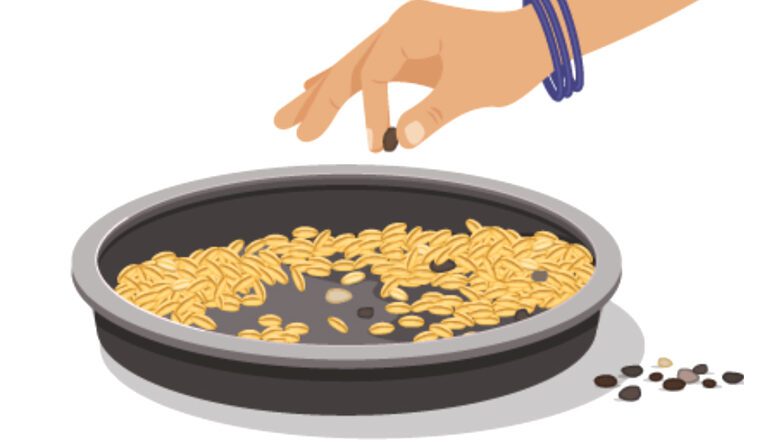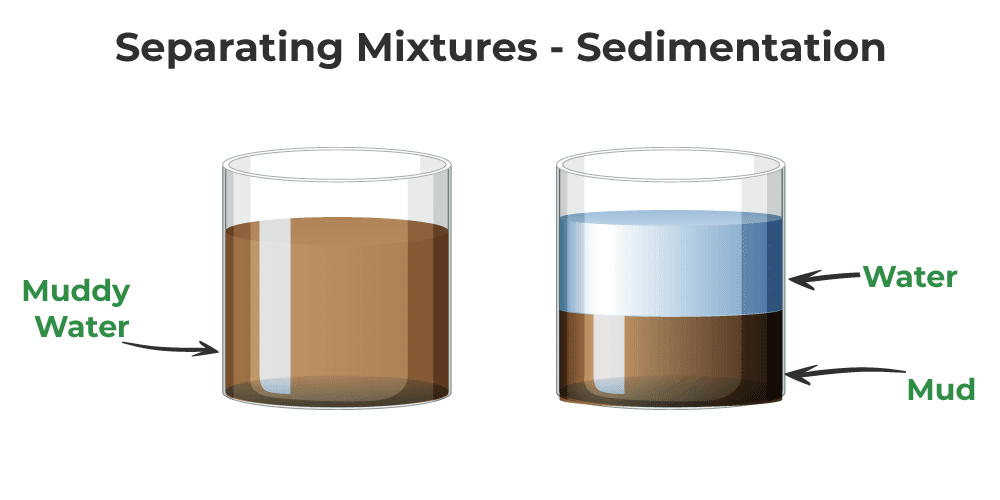Mix It, Fix It, Split It. A Hands-On Guide to Separating Substances
Separation of Substances Experiment for Class 6
Curiosity Questions:
- Have you ever tried to remove sand from salt after they’ve been mixed together?
- How do farmers separate grains from husks without using machines?
- Why does muddy water settle down over time?
STEM Challenge Introduction
In this exciting STEM experiment, we will explore different methods to separate mixtures using everyday materials. You’ll get your hands messy (in a good way) and learn how scientists and farmers use techniques like winnowing, filtration, and evaporation to sort things out. It’s a perfect mix of science, fun, and real-world applications.
Materials Required:
- A cup of salt and sand mixture (equal parts).
- A bowl of muddy water.
- Transparent glass or jar.
- Coffee filter or clean cloth.
- Spoon.
- Two transparent cups or glasses.
- Water (about 200 ml).
- A flat plate.
- Fan or windy area (for winnowing).
- Sieves (optional).
- Eco-friendly containers.
Safety Precautions:
- Ask an adult to help with pouring water and handling glassware.
- Be careful while using sharp tools (if any).
- Wash your hands after the experiment.
Step-by-Step Process:
Winnowing and Hand Picking
- Mix rice grains with dry leaves or small pebbles.
- Use your hands to pick out the large unwanted particles (hand picking).
- For lighter substances like husk mixed with grains, stand in a breezy place or use a fan.
- Drop the mixture slowly from a height on a plate below. The husk blows away while the heavier grains fall straight down (winnowing).
Sedimentation, Decantation, and Filtration
- Pour muddy water into a transparent glass.
- Let it sit undisturbed for 10-15 minutes.
- You’ll notice the mud settling at the bottom (sedimentation).
- Gently pour the clear water into another glass without disturbing the mud (decantation).
- For further purification, pour the decanted water through a coffee filter or clean cloth into a new glass (filtration).
Separating Salt and Sand
- Take a spoonful of the salt-sand mixture and mix it with water in a transparent cup.
- Stir until the salt dissolves completely.
- Use the coffee filter to separate the sand from the saltwater solution.
- To get the salt back, leave the saltwater under the sun on a flat plate and allow the water to evaporate.
- You’ll find dry salt crystals left behind. Magic? No, it’s science.
Expected Outcome
- You’ll see how different substances can be separated using various techniques.
- Mud settles down, sand is filtered out, and salt is recovered through evaporation.
- You’ll discover how separation is based on size, weight, solubility, and physical states.
Observation
- Which part of the experiment was the fastest to complete?
- What happened to the saltwater after it was left under the sun?
- Did the muddy water become clean enough to see through?
STEM Concepts Behind It
- Science: Understanding physical properties like solubility, density, and states of matter.
- Technology: Using simple tools (filters, sieves) to perform scientific tasks.
- Engineering: Designing a step-by-step method to separate components.
- Math: Measuring amounts, timing sedimentation, and estimating ratios.
 Concept Elaboration
Concept Elaboration
Each separation method relates to the properties of the substances solids don’t dissolve, liquids flow, and some materials are lighter or heavier. These simple concepts form the base of larger industrial processes like water purification or mineral extraction.
Real-Life Applications
- Winnowing is widely used in agriculture to clean grains.
- Filtration is used in water purifiers.
- Evaporation helps in salt production from seawater.
Your STEM Challenge
Can you design a mini water purifier using plastic bottles, charcoal, sand, and cloth? Try filtering muddy water through it and compare results with the coffee filter method.
Think Further & Explore More
- Why can’t you use decantation to separate salt from water?
- Explore how desalination plants work.
- Research historical methods of salt production before modern technology.
Click Here – Light Shadows and Reflections Experiment for Class 6
Watch Here – Surface Tension Experiment Video


 Concept Elaboration
Concept Elaboration